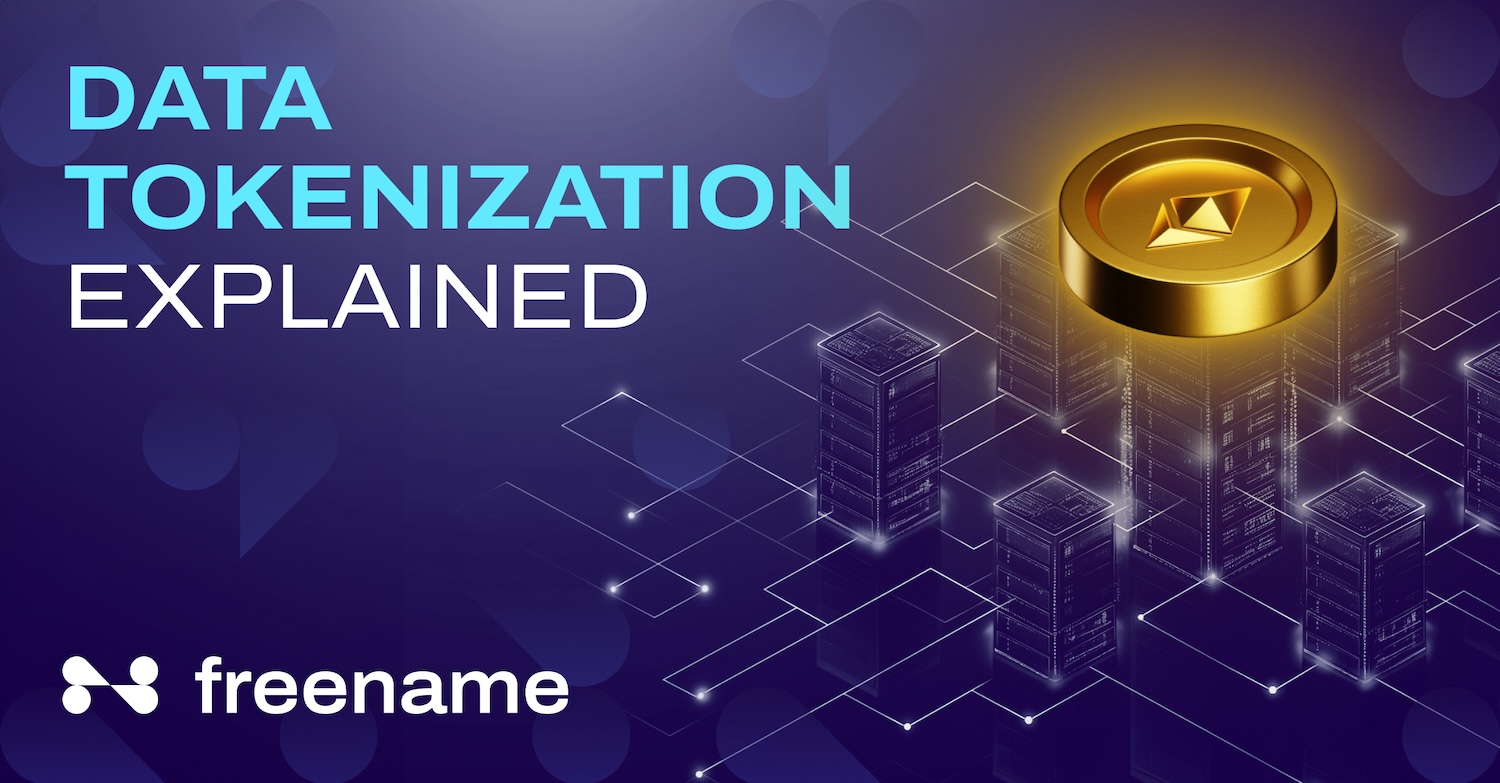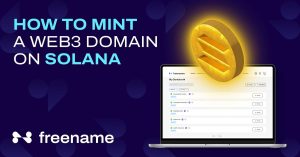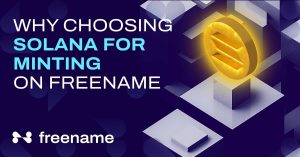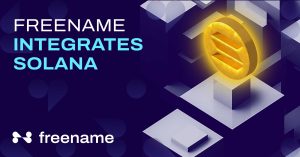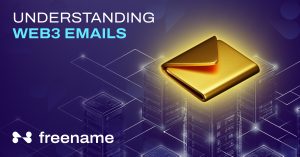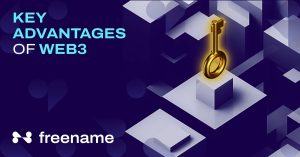Tokenization is a foundational concept in Web3, essentially involving the digital representation of ownership or rights using blockchain technology and working directly in a decentralized system.
We live in a world where our most private details, from our bank account numbers to our personal ID info, are constantly under threat from unseen cyber villains. It may sound ominous, but this is the reality of our digital lives, where data leaks seem to be a daily headline. However, as technology advances, so do the methods of securing sensitive information. One such method is data tokenization. Something of a digital knight in shining armor, this security measure offers a solid defense in the battle to keep our information out of the wrong hands. As a result, its use is on the rise across various industries.
This guide is for anyone curious about tokenization, how it protects their digital footprint and its role in Web3.
Key Takeaways
- Risk Reduction: Tokenization reduces the risk of data breaches by ensuring only tokenized data is used outside of secure environments, adapting seamlessly to the security needs of Web3.
- Security and Privacy: As a fundamental security measure in Web3, tokenization enhances privacy and security by replacing sensitive data with non-sensitive tokens, establishing it as a critical component of Web3 architecture.
- Empowerment and Compliance: Tokenization secures data while empowering users to control their personal information, supporting privacy and compliance in Web3’s decentralized setting.
- Efficient Transactions: Tokenization improves transaction efficiency in Web3 applications like DeFi, crucial for the high performance and scalability required in blockchain networks.
What Is Tokenization?
Tokenization involves converting sensitive data elements into nonsensitive equivalents, referred to as tokens, which can be used in a database or internal system without bringing the original data into the environment. In Web3, this concept extends to using blockchain technology to manage the tokens, thereby providing enhanced security and control.
By leveraging the immutable and distributed nature of blockchain technology, tokenization enhances the security and transparency of asset transactions.
Unlike encryption, which transforms data into a different format while maintaining its usability and meaning, data tokenization replaces sensitive data with unrelated values, removing any intrinsic value and significantly mitigating the risk of data breaches.
So how does this work in the real world? Let’s say you use your credit card to make a purchase online. Instead of sending your actual credit card number, the merchant’s system will generate a token that is linked to your card number. This token, which has no relation to your actual account information, is then used for the transaction. Even if a hacker gains access to this token, it is useless without the corresponding data set to decrypt it.
Other applications of tokenization include:
- Healthcare: Medical records can be tokenized to maintain patient confidentiality while allowing for the secure and controlled sharing of health data for research or treatment purposes.
- Financial Services: In banking and finance, tokenization can secure customer data, reducing the risk of fraud and theft while facilitating the safe sharing of financial information.
- Personal Data Control: Individuals can tokenize their personal data and control access through smart contracts, deciding who can access their data and under what conditions, potentially even monetizing their own data if they choose to share it.
Data Tokenization and Blockchain Technology
You might be wondering how tokenization relates to blockchain technology. Although data tokenization and blockchain operate on different levels, they share some similarities. Blockchain technology also uses tokens as a way to represent and exchange value, similar to how data tokenization uses tokens to represent sensitive information.
When combined, these two technologies have the potential to revolutionize sensitive data security and privacy. Blockchain-powered tokenization can provide a secure and transparent way to store and exchange sensitive data, reducing the risk of data breaches and unauthorized access.
For instance, in a blockchain system, tokenization can be used to secure sensitive data before it is recorded on the blockchain. This approach leverages blockchain’s secure, immutable transaction ledger capabilities while protecting the confidentiality of the data through tokenization.
A practical example would be a blockchain-based supply chain management system. In this case, sensitive information about goods, such as their origin, price, or contractual agreements, can be tokenized before being recorded on the blockchain. This means that while the blockchain provides a transparent and immutable record of the supply chain transactions, the tokenization protects specific details that need to remain confidential from unauthorized access.
Benefits of Tokenization in Web3
- Enhanced Privacy: By tokenizing sensitive data, personal information like social security numbers or bank account details can be replaced with tokens. These tokens can be stored or processed without exposing the underlying data, reducing the risk of data breaches.
- Decentralized Control: Web3 technologies enable decentralized management of data tokens, allowing individuals to retain ownership and control over their own data. This is a shift from the centralized data management systems prevalent today, where corporations often control user data.
- Secure Transactions: The use of blockchain ensures that any transaction involving data tokens is recorded in a tamper-proof ledger. This secure environment is critical when dealing with sensitive information.
- Regulatory Compliance: Tokenization can help organizations meet data protection standards and regulations such as GDPR by minimizing the exposure of sensitive data and enhancing the security of data processing activities.
Encryption vs Tokenization in Web3
In the context of Web3, which focuses on decentralized platforms and blockchain technology, the comparison between encryption and tokenization becomes particularly significant. Both methods aim to protect data, but they do so in fundamentally different ways, each offering unique advantages and presenting specific challenges within a decentralized framework.
Understanding Encryption and Tokenization
Encryption transforms sensitive data into a coded format that can only be accessed with the correct decryption key or password. In Web3, encryption is crucial for securing data that travels across decentralized networks, ensuring that only authorized parties can access the information.
Tokenization, on the other hand, replaces sensitive data with non-sensitive tokens that can be safely used within the blockchain environment without exposing the underlying data. These tokens represent, but do not equal, the original data, making them useless outside of the tokenization system.
Security Advantages of Tokenization Over Encryption
Tokenization offers distinct security benefits that are particularly valuable in the Web3 ecosystem. Unlike encrypted data, tokenized data cannot be reverted to its original form without access to the tokenization system, thus providing an additional layer of security. This is crucial in Web3 applications, where decentralized systems often face sophisticated cyber threats.
Furthermore, tokenization is advantageous for handling large volumes of transactions common in Web3 applications, such as in decentralized finance (DeFi) platforms. Tokenization does not require the computational overhead of encryption and decryption processes, allowing for faster and more efficient data handling. This speed is essential in environments where performance and scalability are critical.
When Encryption Shines
Despite the advantages of tokenization, encryption remains vital for protecting data at rest within decentralized networks. It provides a robust barrier, as the encrypted data is indecipherable without the corresponding key, ensuring that data remains secure even if the storage medium or network is compromised. This level of security is indispensable for sensitive data that requires long-term storage, such as personal identification information or contractual data stored on blockchains.
Potential Vulnerabilities
However, each method has its vulnerabilities. Encryption’s main risk involves key management. If the encryption keys are compromised, the protected data can be quickly and easily decrypted by unauthorized users. On the other hand, tokenization depends heavily on the security of the token vault or database where original data is stored. If this external system is breached, the original sensitive data could be exposed.
The Potential Impact of Web3 Technologies on Tokenization
As Web3 technologies continue to evolve, their impact on data tokenization is expected to grow significantly. Blockchain, the backbone of Web3, offers a decentralized and transparent environment that can greatly enhance the security and integrity of tokenized data. The immutable nature of blockchain ensures that once data is tokenized and recorded on a blockchain, it cannot be altered or tampered with, thus providing a permanent and secure record.
Furthermore, the integration of smart contracts with tokenization can automate the enforcement of data privacy and compliance policies. Smart contracts can be programmed to execute specific actions when certain conditions are met, such as automatically deleting or anonymizing tokenized data after a set period. This not only enhances data security but also ensures compliance with data protection regulations automatically.
Last but not least, building on the concept of homomorphic encryption, homomorphic tokenization allows for computations on encrypted data without the need for decryption. This trend opens new possibilities for secure data processing in cloud environments while maintaining confidentiality.
Data Tokenization in Web3 – An Effective Security Measure
Tokenization is a critical security measure within the Web3 ecosystem, particularly relevant in areas such as decentralized finance (DeFi) and NFT marketplaces. This technology, familiar in the traditional payment card industry, is now being adapted to safeguard digital transactions on blockchain networks and to safeguard digital assets, identity and footprint. You might have encountered tokenization in various forms, such as your credit card number being replaced by a token during online transactions, or your login credentials being converted into tokens for secure authentication.
In the Web3 context, users interact with multiple decentralized applications (dApps) and share an increasing amount of sensitive information—from cryptocurrency wallet addresses to transaction histories. With the rising rates of cybercrime and data breaches in the digital space, the imperative for robust security measures is more critical than ever. Tokenization offers an effective solution by replacing sensitive data with non-sensitive tokens, thus enhancing the security of data transfers across decentralized networks.
The role of tokenization is set to grow increasingly central in protecting user data within blockchain environments. Its ability to secure sensitive information while supporting the decentralized nature of Web3 makes it a valuable tool for enhancing data security in a world where digital interactions continue to expand.
Take advantage of the latest technology and tokenization at its best! Buy a Web3 domain with Freename and build your risk-free online presence.
Further Reading
Academic Articles
- Security and Privacy in Decentralized Energy Trading Through Multi-Signatures, Blockchain and Anonymous Messaging Streams
- A framework for efficient cross-chain token transfers in blockchain networks
- Web3 and Token Engineering
- An Ultra-Scalable Blockchain Platform for Universal Asset Tokenization: Design and Implementation

